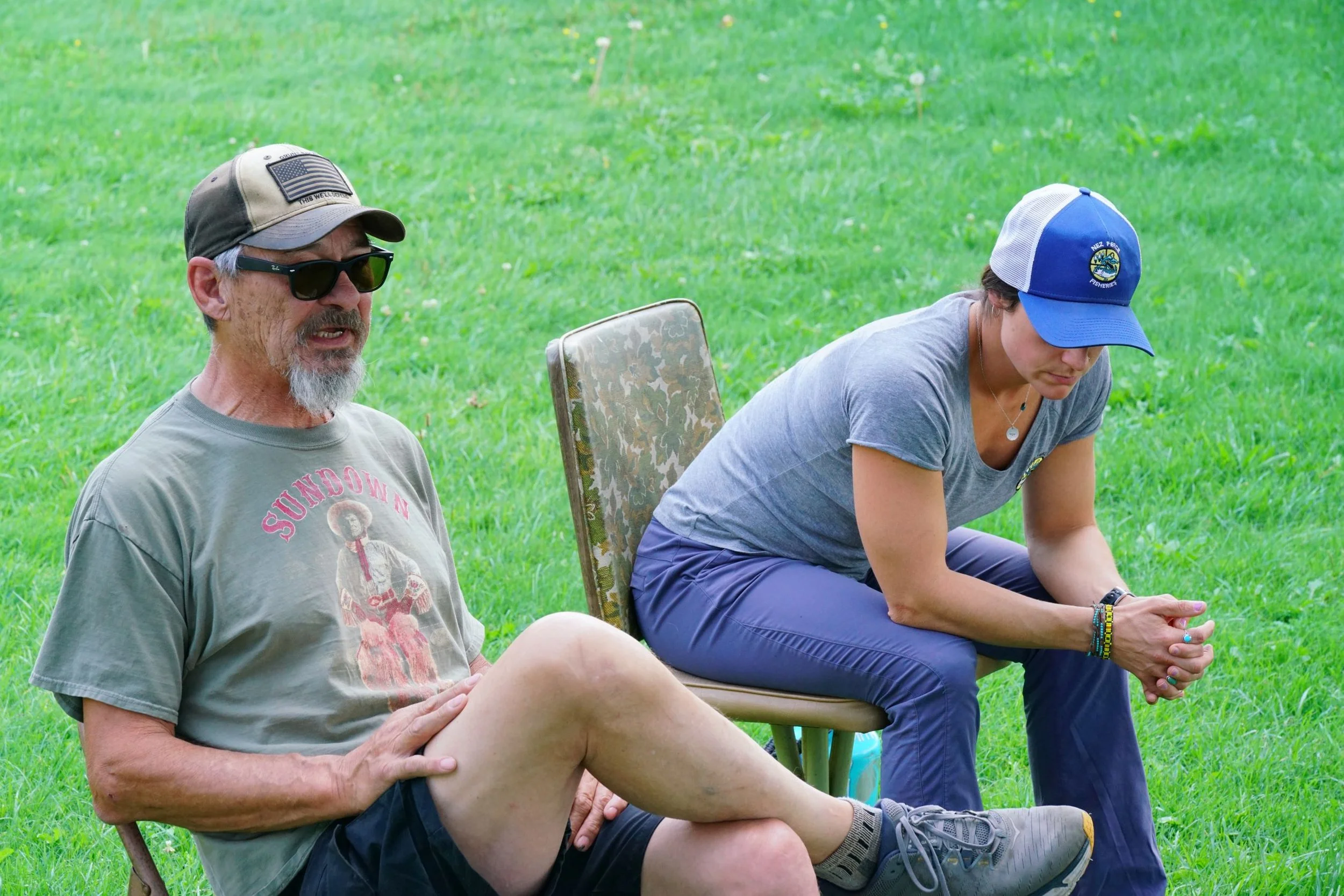Joe McCormack and Montana Pagano
McCormack: President, Nez Perce Homeland Project
Pagano: Watershed Restoration Specialist, Nez Perce Tribe
Wallowa County, OR
8/31/22
The scene looks like something out of a postcard; hot midday sun on sloping buttes, pale yellow broken up by creaking barns and lone trees, a desolate sky that seems to shake with the oppressive heat. It would make a good photo, a still life of a barren land, pristine and empty in its captured stillness. So beautiful, so lifeless.
But standing with your feet in the dry brush doesn’t feel like stepping into a photograph. There is no stillness here. A black cat slipping between rocks, the whine of a dog escaping from a car window. White butterflies, the brush of a snake. And in the center of it all, Joe McCormack and Montana Pagano, as startling to see as the wobbling birds overhead and hopping crickets underfoot. They stand in the grasses of the Nez Perce Wallowa Homeland, a portion of land owned by the tribe that historically occupied Wallowa County. After hundreds of years of violence and forced removal from the landscape, the Nez Perce are slowly making their way back to their ancestral homeland. The 320 acres of land that we are gathered on, along with our two speakers and their colleagues, stand at the center of that reclamation.
Joe, part of the Nez Perce tribe, is the only tribal member to permanently reside in Wallowa County. He is the president of the Homeland project and works with the Tribal Fisheries to restore native fish to the landscape. Sitting in front of us in a faded t-shirt and sneakers, he is practically overflowing with stories and facts. From his time serving in Vietnam to the recently installed cell tower on the land, he bounces between topics with an even-keeled enthusiasm. Most of all, though, he tells of the fish that this region houses and how the local tribes are making efforts to restore their habitats.
Occasionally, Montana will chime in with some additional information about conservation work on the Homeland property. Her ponytail swinging behind her, she leads us out in the heat to look at the river that cuts through the prairie grasses. Her work involves increasing the diversity of the waters by adding various natural structures to divert and complexify the flow of water. Doing this helps restore water to the banks around the river, helping native plants (some of which are culturally important to the Nez Perce peoples) take root. These roots and complex water systems, in turn, provide habitat for fish that need places of refuge on their journeys to the ocean.
The work that Joe and Montana do on this land has a visible impact; the shores around the river are lush with willow and cottonwood. I’m sure that much of the wildlife I was so surprised to see in the landscape is here due to the efforts of people like them who work hard to restore the cultural and ecological richness to Wallowa County.
By Hannah Cuvin

